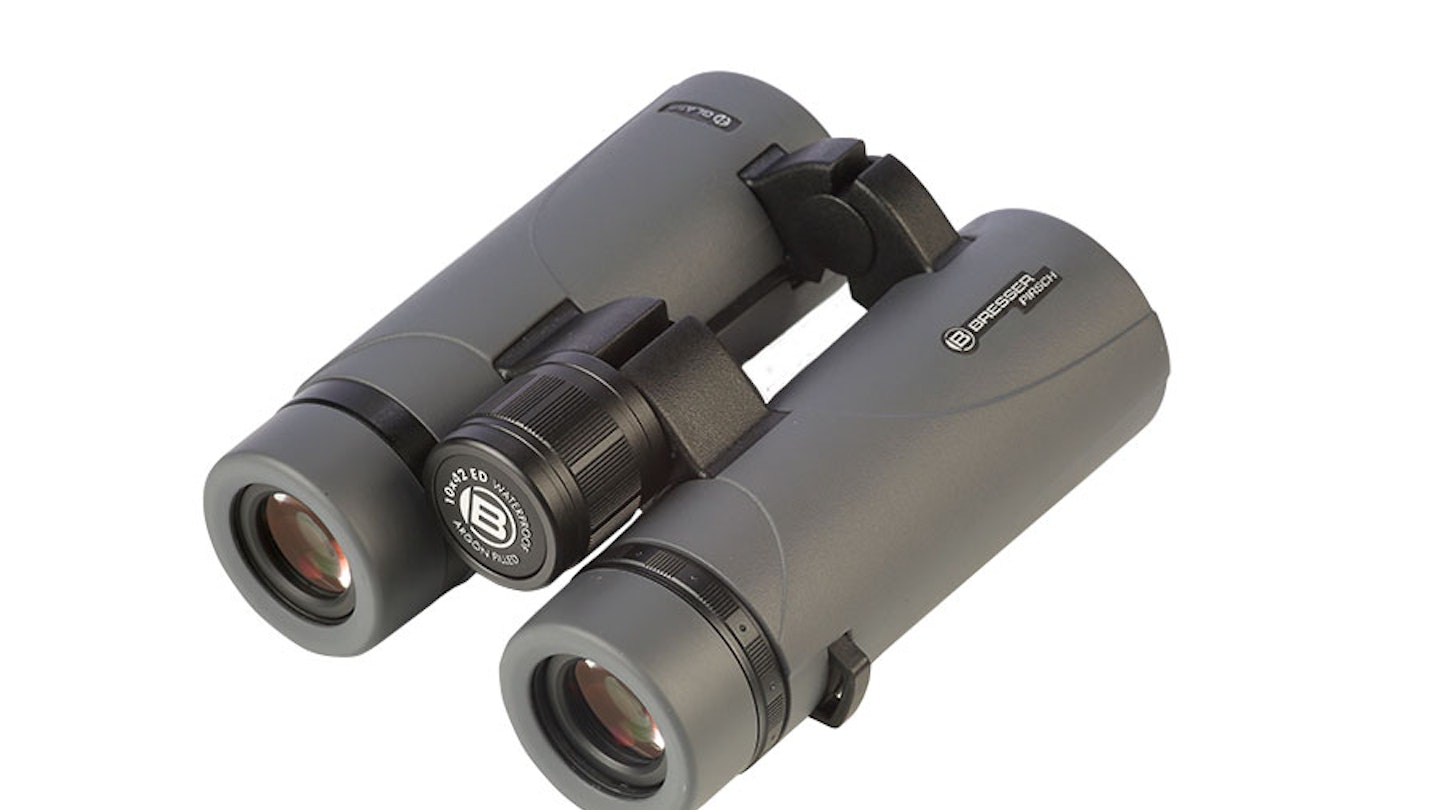So, Bresser’s Condors proved to be mightily impressive contenders in the sub-£200 binocular category. Their Pirsch ED range is aimed at the birdwatcher who wants higher-quality optics. So, how do they measure up?
Well, they feel good, for starters, remarkably compact for 10x42s, and they’re well balanced to boot. I liked the open-bridge design, which made them easy and comfortable to grip even when wearing gloves, and the rubber armouring is solid and robust. I liked the battleship-grey colouring, too – distinctive but unobtrusive.
The eyecups twist up and down to three distinct positions, and stayed in place well. They’re hard plastic, and well shaped for comfortable viewing.
The focus wheel is really wide – pretty much two fingers – which again is great if you’re using the binoculars while wearing gloves, or with very cold fingers. If I’m being fussy, I’d have liked a bit more ridging or texture on there. It turns very smoothly and very slightly stiffly, taking two and a quarter anti-clockwise turns from close focus to infinity. Precise focus was easy to find, perhaps because of that slight stiffness.
The dioptre adjustment is on the right barrel. It takes a bit of shifting, which is a pretty good thing, really, because once set, it didn’t get moved by accident, while I was out birding.
So, what about the optics? Well, the view is bright and very sharp, with really excellent contrast, and with that sharpness extending right to the edges, ensuring that you get the full benefit of the 109m@1,000m field of view. That’s important, because it offsets the narrowing effect of the extra magnification nicely.
The ED glass really comes into its own in low-light conditions.
When birding at dusk, and on a day of unbroken overcast and mizzly rain, the image still appeared bright. I compared them to the Condors in such light, and the extra punch provided by the better quality glass and coatings was obvious. Don’t get me wrong – the Condors do a very fine job, but the Pirsch justify their extra price tag.
I thought there was a very slightly ‘warm’ colour cast, but it was very hard to find any colour fringing, even against strong light, except on the very odd occasion when following a fast-moving target.
They close-focus down to around 2m, more than enough for the needs of most birdwatchers and bug enthusiasts – if you need more you’ll probably look at more purpose-built bins anyway.
One thing that did strike me – and this is a point about binoculars, generally – is that I actually found it more useful when viewing at short range, to pick out small details, rather than when looking for distant birds, as you might expect.
It comes with an excellent, wide neoprene strap, a rainguard, removable, tethered objective lens covers, and a good fabric case with its own strap. There’s also a really neat little cleaning brush, too (pictured) – it’s a nice touch, because you’ll probably already have umpteen cleaning cloths.
There’s an accidental damage warranty, so if you register online Bresser will repair or replace them if you drop or damage them. If you don’t register, there’s still a 30-year manufacturing fault guarantee, so there’s no reason these well-built bins shouldn’t last you a long time.

ligo.co.uk
Factfile
Eye relief: 16.4mm
Field of view: 109m@1,000m
Close focus: 2m
Weight: 636g
Size: 145mm x 121mm x 52mm
RRP: £339
Supplied with: Neoprene strap, fabric case, rainguard, lens covers, cleaning tool
Verdict
For not much more than £300, the Pirsch ED bins offer you excellent optical quality, good build quality, and a design that makes them a pleasure to handle for long periods. The accessories are good, too, so these are a really good option if you’re looking to invest in a pair of bins that will cope with any birding situation you come across.
